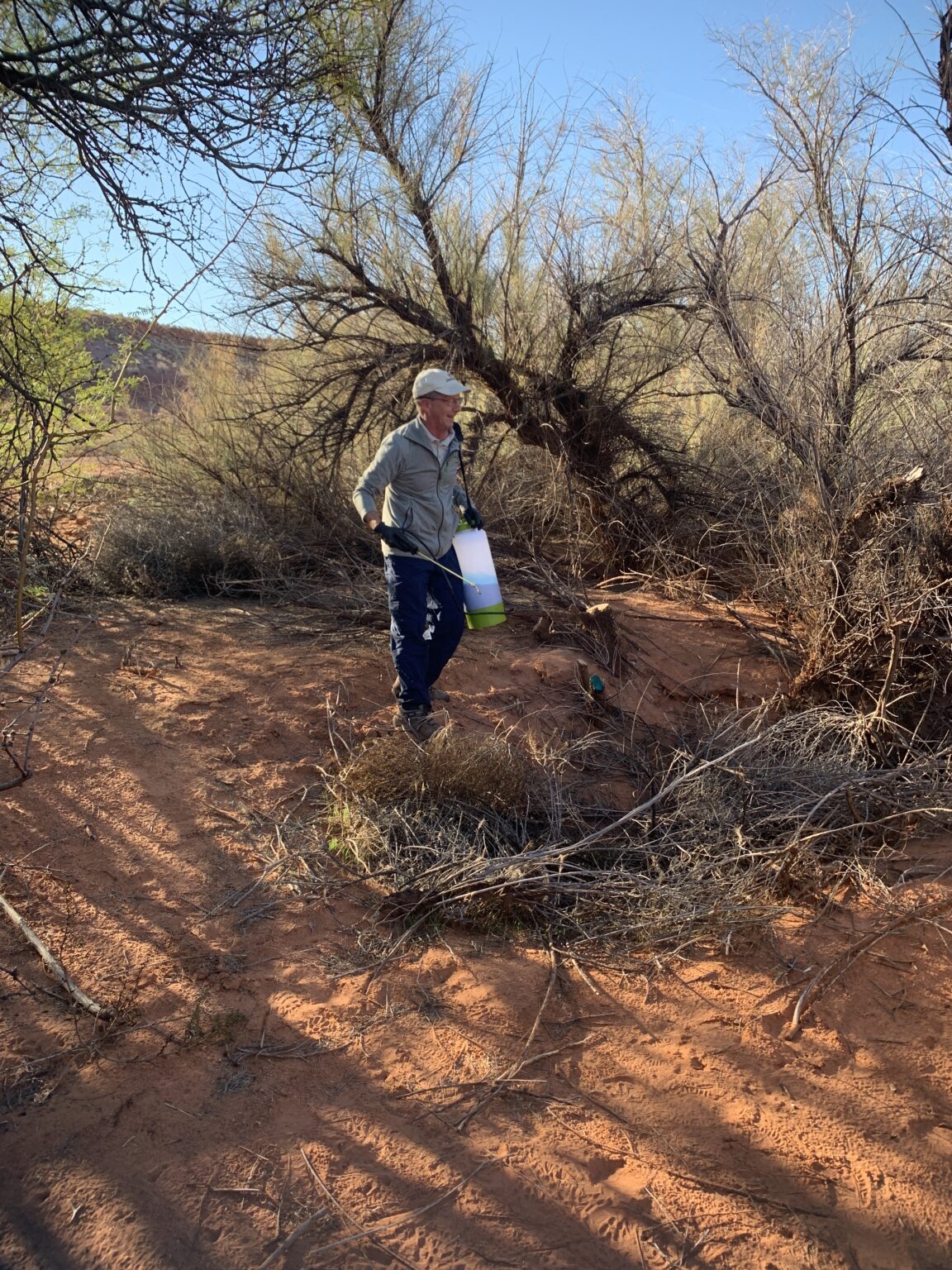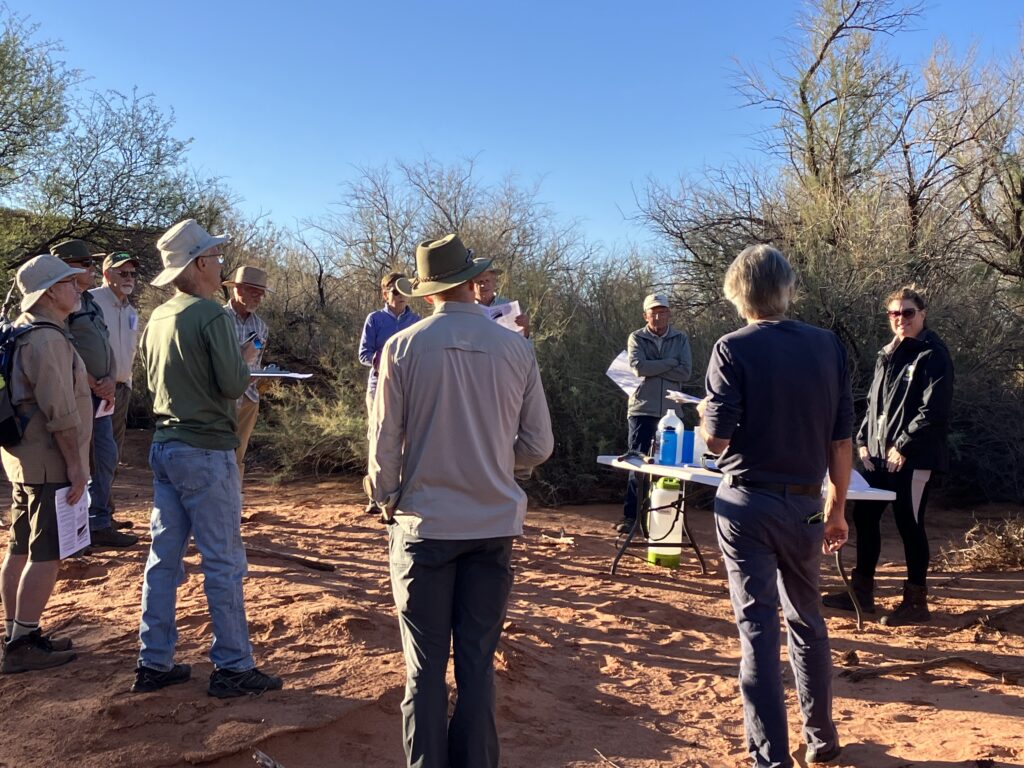
DPI Workshop Prepares Volunteers for Upcoming Projects
October 2022
How should you dress to safely handle even a low-level pesticide? Why is it important to treat tamarisk within ten minutes after it is cut? These and other questions about safety and science were among those answered for volunteers and directors of the Desert Preservation Initiative at a recent hands-on herbicide training and safety workshop in the Kayenta Wash in the city of Ivins.
The workshop met its primary goals, according to attendees, of providing comfort about the use of herbicides and knowledge as to how the treatment process works. Scott Florence, who worked for the Bureau of Land Management and treated tamarisk in New Mexico for 30 years, says “These workshops are important to educate local residents who may be on the edge about removal and especially herbicide application.” DPI Vice-President Dan Beck agrees. “This training made people comfortable that this is a low-risk herbicide when applied correctly, and that the application process results in minimal, if any, contact with the herbicide.”
The trainers, Richard Heflebower Jr., a horticulture Extension Agent for Utah State University in Washington County, and Amy Davidson, a Compliance Specialist in the Pesticide Program of the Utah Department of Agriculture and Food, demonstrated equipment use and herbicide application, explained technical terms, and answered questions.
Key points included the importance of applying the pesticide within 10 minutes of cutting a tamarisk stump to insure killing the plant and minimizing the amount of herbicide used, which in turn minimizes the impact on the surrounding habitat. In fact, in answer to a question about any danger to family dogs, Amy replied that there is essentially no danger, as the spray dries quickly on the cut stump in our dry climate.
As a Utah non-profit focused on restoration of native desert ecosystems in SW Utah, DPI has selected tamarisk as its priority species for cutting, removing, and killing within the washes and ravines that are part of the Santa Clara River Watershed. The workshop was designed to prepare DPI volunteers for upcoming tamarisk removal projects later this year, as fall is the best time to apply the herbicide for maximum effectiveness.
The bottom line, says DPI President Chuck Warren, is that the workshop “broadened the base of people in Kayenta who are determined to address the extremely concerning fire danger presented by tamarisk and the impact on native plants being replaced by this invasive.”
Attendee Barbara McLaughlin agrees. After learning about “the fire hazard tamarisk creates, the water that is consumed by this vegetation, and how it chokes out native species,” Barbara and her husband Cameron Ferguson “realized that DPI was a crucial effort” and have joined DPI as new members. Barbara found the workshop “excellent” and adds, “Luckily, we have no tamarisk on our property but nonetheless this local invasive impacts us all.”

